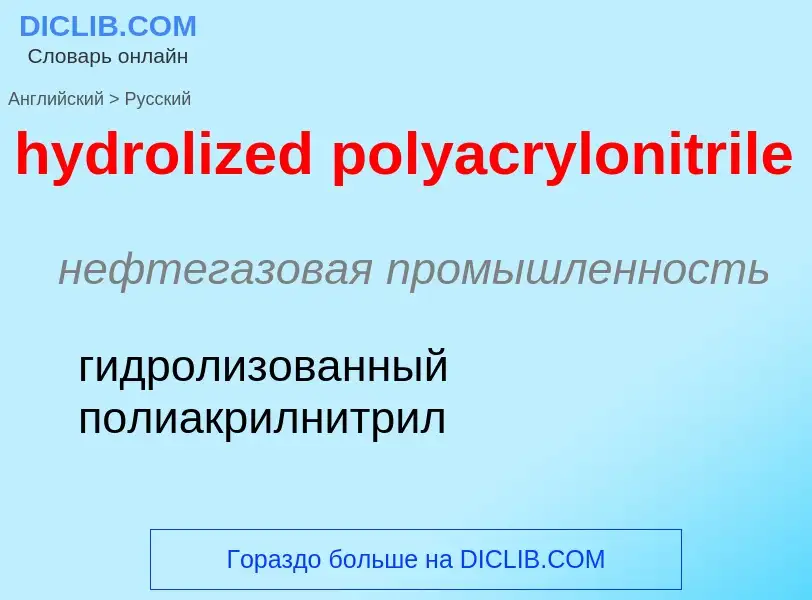Translation and analysis of words by ChatGPT artificial intelligence
On this page you can get a detailed analysis of a word or phrase, produced by the best artificial intelligence technology to date:
- how the word is used
- frequency of use
- it is used more often in oral or written speech
- word translation options
- usage examples (several phrases with translation)
- etymology
hydrolized polyacrylonitrile - translation to russian
нефтегазовая промышленность
гидролизованный полиакрилнитрил
химия
ПАН
нефтегазовая промышленность
полиакрилнитрил
Смотрите также
[haidrə'litik]
общая лексика
гидролитический
гидролизный
прилагательное
химия
гидролитический
Wikipedia
.png?width=120)
Polyacrylonitrile (PAN), also known as polyvinyl cyanide and Creslan 61, is a synthetic, semicrystalline organic polymer resin, with the linear formula (C3H3N)n. Though it is thermoplastic, it does not melt under normal conditions. It degrades before melting. It melts above 300 °C if the heating rates are 50 degrees per minute or above. Almost all PAN resins are copolymers made from mixtures of monomers with acrylonitrile as the main monomer. It is a versatile polymer used to produce large variety of products including ultra filtration membranes, hollow fibers for reverse osmosis, fibers for textiles, and oxidized PAN fibers. PAN fibers are the chemical precursor of very high-quality carbon fiber. PAN is first thermally oxidized in air at 230 °C to form an oxidized PAN fiber and then carbonized above 1000 °C in inert atmosphere to make carbon fibers found in a variety of both high-tech and common daily applications such as civil and military aircraft primary and secondary structures, missiles, solid propellant rocket motors, pressure vessels, fishing rods, tennis rackets and bicycle frames. It is a component repeat unit in several important copolymers, such as styrene-acrylonitrile (SAN) and acrylonitrile butadiene styrene (ABS) plastic.

.png?width=200)

![condensation]] are reversible.) condensation]] are reversible.)](https://commons.wikimedia.org/wiki/Special:FilePath/Hydrolysis.png?width=200)
